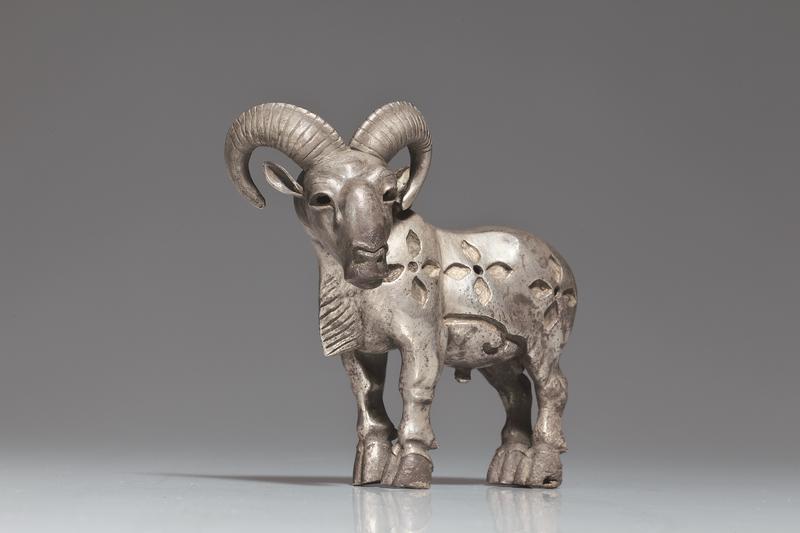牡羊小像
- 古エラム 前3000~前2800年頃
- 銀製
- H-9.8 D-11 W-5.1
牡羊小像
大きく弧を描く角、髭はないが長い胸毛。この銀の小像は、西アジアの山岳地帯に棲むムフロンの牡羊を象る。人なつこい相好とかわいらしい体形は、今から五千数百年遡る古代南イラン、原エラム時代の”ゆるキャラ”か。左側だけ四芒星を三つ刻み貴石を象嵌していた。この星をまとうムフロンは牡羊座の徴なのだろう。
かれらは日の出直前に東の空に昇る牡羊座を見、復活再生の新年の到来を知った。少し重そうだが、この像は新年の儀式で神官の胸に提げられたのかもしれない。背に鐶がつけられているのだ。
Standing Mouflon
Large, arc-shaped horns, a bare head, but long mane on its chest. This silver statuette represents a male mouflon, native to the mountain zones of Western Asia. Its friendly features and cute body-shape may have made it the popular mascot of its day, in the Proto-Elamite period of Ancient South Iran some 5,000 years ago. On its left flank are three engraved four-rayed stars inlaid with precious stones. Might this mouflon, adorned with stars, represent the constellation of Aries?
People saw Aries ascend the eastern sky immediately before sunrise, and knew that a new year of rebirth had arrived. Although it is little weighty, the statue may have been worn on the priest's chest in New Years' rituals. It has a ring attached to its back.
